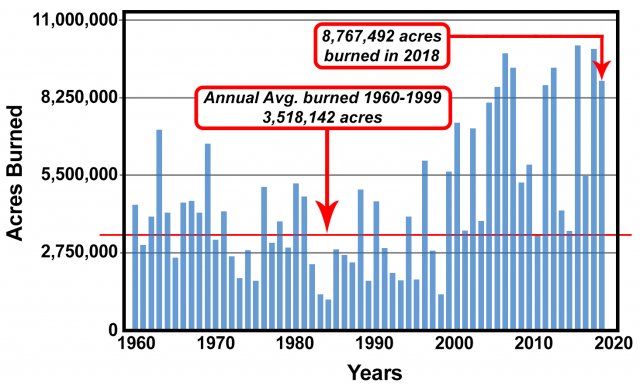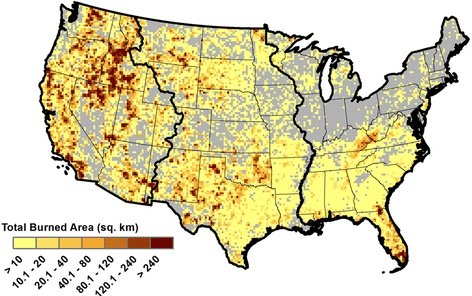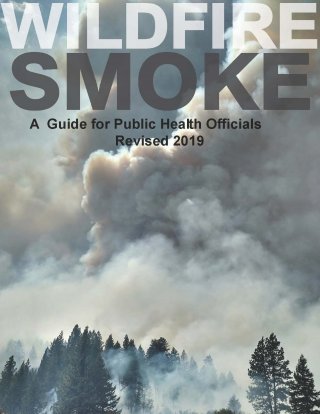Importance of Educating Patients in Wildfire-Prone Areas
As shown in Figure 5, wildfires are increasing in size and intensity across the U.S., and these trends are expected to continue (USGCRP, 2018). In addition, about 1 in 3 homes in the United States is located in the wildland-urban interface near forests or other natural vegetation, and there is an upward trend in growth for home construction in these areas (Radeloff, 2018). The expansion of the wildland-urban interface increases both the potential impacts on people from wildfires and the potential for residents to cause more human ignitions of wildfires. Figure 6 shows areas of the U.S. that have experienced a wildfire between 1992 and 2015.

If you practice in an area that is prone to wildfires or smoke events, or if the National Interagency Fire Center has issued a National Significant Wildland Fire Potential Outlook indicating the potential for significant fires in your area, it’s important to help your patients be prepared to reduce their exposure to smoke. This is especially true for the “sensitive groups,” your most at-risk patients: those with cardiovascular or respiratory disease, older adults, children up to 17 years of age, pregnant women, outdoor workers, and those of lower socio-economic status.

Because wildfires can start and spread rapidly, relationships between health care team members (e.g., doctors, nurses, asthma educators) should be in place before a crisis begins. Pre-existing partnerships enable rapid response to serious smoke episodes and allow everyone to quickly access and share vital information. For example, consistent messages about wildfire smoke and health risks from members of the health care team reduce potential public confusion.
Because physicians, nurses and asthma educators have a high degree of credibility with the public, consistent messaging reinforces the importance of preventative measures and actions to take during a wildfire to reduce exposure. In states that prepare formal emergency smoke response plans (see Arizona’s Department of Health Services Wildfire Incident Annex –March 2016 as an example), the health care team can access these for local points of contact, responsibilities of state agencies and other partners, and instructions for acquiring extra resources such as monitors or masks. State and local health departments are also good resources, even when there is no formal emergency smoke response plan.

